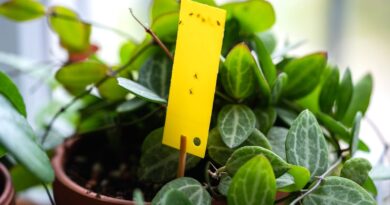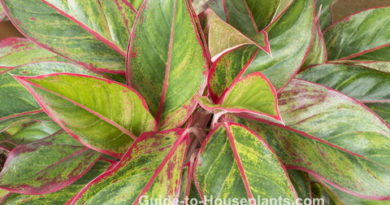How to Grow Popular Plants in Water Indoors
If you follow a few houseplant accounts on social media, you’ve probably seen tons of images of houseplants growing in water, wondering if it’s possible to do that long-term. The answer is yes, and it can even be better than growing in soil in a few ways.
Growing houseplants in soil is a messy business, especially if you have curious pets that like to knock pots over. It also opens you up to problems with soil-borne pests and diseases and maintenance tasks like repotting. This method eliminates all those issues and the stress that comes with under or overwatering.
Since growing without soil isn’t the plant’s normal state, there are a few rules to follow to get it right. With the right conditions and a few adjustments in care, you can turn your cuttings into an Instaworthy décor display.
Choose The Right Plant

If you want to grow plants in water long-term and do it successfully, you need to start with the right plant. Not all plants are suitable, at least not for more than a couple of months. If you choose the right plant from the start, you will save yourself a lot of headaches.
Many houseplants are great candidates. Many philodendrons are remarkably easy to grow, especially the vining varieties like the classic heartleaf philodendron. Other vines like pothos or English ivy are also great options.
But my favorite plant for this method is the classic Monstera deliciosa. The leaves are often used in vases as décor, but when cared for this way, they can last for years rather than mere weeks. I regularly take cuttings from my larger plants to pop into vases, quickly expanding my collection and improving my interior design at the same time.
You aren’t restricted to houseplants either. Many herbs can also grow well this way, which is great for quick access in the kitchen. Mint and chives are quick-growers suitable for beginners as long as you give them a sunny windowsill to spark new growth.
Start From Cuttings

Looking at images of vases filled with roots and plants with massive leaves online, you may assume the easiest way to is to simply transplant a large potted plant into the water. Unfortunately, this usually leads to an early plant death rather than a dramatic display.
The roots that grow in this method differ slightly from those grown in soil. There is far less resistance to growth than occurs when growing in soil, making those roots slightly more delicate. Soil roots are also accustomed to more airflow and less moisture.
If you transplant an existing houseplant into water, the most likely outcome is rot. Unaccustomed to moisture exposure permanently, the roots may become mushy and die off. Even if there isn’t permanent damage, it will take a long time for the roots to adjust to living in water forever.
Instead, take a cutting from your chosen plants and root them in water. These cuttings will be far happier to grow this way from the start than the original plants. If you don’t have the plant already, ask friends or neighbors for cuttings to root.
Use A Clear Vase

Considering the range of decorative vases on the market, choosing the right container is just as time-consuming as selecting a new decorative pot for your houseplants. You can choose from many different shapes and sizes, but the one requirement you should stick to is that the vase is transparent.
Glass vases serve an aesthetic purpose, looking clean and modern and allowing the plant itself to shine. It’s also exciting to watch the roots grow – not something we get to do with regular potted houseplants.
However, clear vases are also functional. Having an easy view of the roots and water level helps you decide when it’s time to top up the water, when it needs changing or cleaning, and when the roots are becoming too long.
To avoid algae growth, you can also choose darker glasses that are still opaque, letting less light in but allowing you to monitor the roots and water. But I would avoid solid vases so you don’t encounter root problems you can’t see.
You can still get creative with containers, but ensure they allow you to monitor root health first and foremost.
Fill With Clean Water

There are debates about the best water to use for long-term plant growth. Filtered or distilled water is recommended over tap water, especially if your tap water is low quality. But realistically, tap water is fine in most cases. As long as you pick resilient plants, your cuttings will usually adapt.
The most important concern is that the water is clean and that you top it up regularly. The roots should always be submerged. Water roots will quickly dry out when they lack moisture, so make it a habit to check the water line.
If the water starts changing color, it’s best to replace it completely. Also, rinse the roots before filling the vase with clean water to prevent it from getting dirty too quickly. Keep an eye on the water level and continue to fill with fresh water as needed.
Add Liquid Fertilizer

Soil serves a few vital purposes, the largest of which is plant-accessible nutrients. Soil contains many nutrients essential to plant growth, including the big three – nitrogen, phosphorus, and potassium. When you remove the soil, you also remove a plant’s nutrient source, meaning you’ll need to provide them yourself.
As with any hydroponic growth, gardeners must manually add nutrients to fuel plant growth. Without these nutrients, you won’t spot any new growth, and your plants will likely turn yellow and die off over time.
Luckily, the process doesn’t have to be as complex as edible hydroponics. A balanced liquid fertilizer will provide everything the plant needs to grow well. You won’t need to apply fertilizer in large amounts either – a few drops in a small vase is plenty. You don’t want to overdo it and overload the roots.
Whenever you change the water, don’t forget to add a few drops of fertilizer again. You can give the plants a break when temperatures dip over fall and winter.
Keep In Bright Indirect Light

When cutting flowers or foliage to display indoors, the advice is to keep the vase well out of the sun’s path. The darker the area, the longer your flowers will last. This isn’t the case for plants that are growing in water indefinitely.
All plants need sunlight for photosynthesis. Without it, they won’t be able to produce or store ‘food’ to sustain themselves, eventually dying off.
Due to their decorative nature, placing your water-grown houseplants in darker corners where other plants struggle may be tempting. But just like those other plants, these cuttings won’t grow in dark corners either.
Most houseplants grow best in spots with bright, indirect light. Because this isn’t natural for these plants, you want to give them the best possible environment to help them thrive. Other plants you can root using this method, such as herbs, will need direct sun if you want them to put out new growth.
Clean The Vase

Several factors can contribute to dirty water around the roots, leading to a dirty vase. Just as florists recommend cleaning cut flower vases to extend their lifespan, you should also regularly clean the vase your plants are growing in.
When removing the plant, it’s essential to be gentle with the roots to avoid damage. This can be tough in glasses with thin necks, so pull gently. Set the plant aside while you thoroughly clean and sterilize the vase, filling it with clean water and bundling the roots to put them back afterward.
Trim The Roots

Due to the strange conditions plants find themselves in when growing in water, they prioritize root growth rather than leaf and stem growth. There is far less resistance to root growth, making expanding below the water line much easier than above it.
This does mean that your vase will quickly become overloaded with roots. They may look cool, but they can make the plants much tougher to remove and care for if roots start dying off.
If you notice growth getting out of hand after a couple of months, remove the plant from the water and use a sharp set of pruning shears to trim the roots back. Don’t remove more than about a third of the roots at one time, focusing on ones that look unhealthy and don’t serve the plant well.
If you use a gentle hand and don’t remove too many roots at once, this practice will do far more to help growth than it would harm.
Clean The Leaves

Houseplants grown in water are appreciated for their aesthetic value and the limited maintenance required (especially for forgetful waterers like myself). But this does mean they can quickly become part of the furniture, leading you to forget an essential part of care – cleaning the leaves.
Like any houseplant, leaves kept indoors collect dust along with the rest of our homes. This impacts the overall look of the plant and hinders growth by limiting sunlight absorption. Wiping down the leaves with a damp cloth will make them look new, and the plants will feel better, too.
“Leaf shine” products are available that promise to keep your plants’ leaves looking stunning, but these just aren’t necessary. Often, they add a waxy coating to the leaf surfaces that gathers more dust. A damp cloth is perfect for keeping the foliage looking good.
Final Thoughts
Growing plants in water long-term comes with a few quirks, but none that are difficult to manage. Indeed, this method is often considered easier to manage than houseplants in soil, making it well worth a try!




